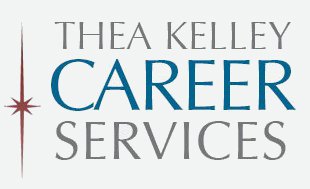 Many people may have been involved and affected by your job search and transition, and those relationships are important for your future. So, some of the items in this checklist are about maintaining relationships and nurturing your network.
Many people may have been involved and affected by your job search and transition, and those relationships are important for your future. So, some of the items in this checklist are about maintaining relationships and nurturing your network.
Other items are about putting your job search away neatly, like a set of tools you’ll need again someday. Chances are, this isn’t the last job transition you’ll ever go through, so why not make the next one easier?
Here are several steps you can take for a flawless transition.
Job Transition Checklist
Get Ready to Give Notice:
☐ Get the new job offer in writing. Make sure everything is very clear, including start date, role and title, salary and all benefits. Complete any negotiations and obtain written confirmation of any changes that have been agreed to.
☐ Gather resume-fodder from the job you’re leaving. If you can do so without violating agreements, take home copies of your performance reviews and note details about your accomplishments (how much you increased efficiency or sales, etc.).
☐ Know what’s yours and what belongs to the business. Who owns your LinkedIn profile if your employer helped you set it up and it’s connected to your business email address? Who owns your customer contacts? Disputes have arisen over these types of information.
Break the News at the Company You’re Leaving:
☐ Give notice. Do this verbally first, and then in writing. Keep the vibes positive and appreciative. Offer at least two weeks’ notice, and maybe more in order to prevent hardship for the team. But remember that your future is with the new company, so put that relationship first.
☐ Offer to train your replacement and/or create documentation for the next person in the role. Share your tips. Explain those processes nobody knows more about than you.
Wrap Up Your Job Search:
☐ Communicate and appreciate. Nurture your network by sharing your good news and gratitude with everyone who helped you during your search in any way, large or small. Decide how you’ll maintain those relationships.
☐ Update and improve your LinkedIn profile; this is the best time to do it. An overhaul a year from now could arouse suspicion, but right now an update is perfectly normal. Plus, an effective profile may help you make a good impression on your new colleagues.
☐ File away information for your next job search. If you’ve created various versions of your resume or gathered a lot of data about companies, job titles and contacts, make sure this information will be easy to find in the future.
Relax, Regroup and Get Organized:
☐ Take some time off, if at all possible, to renew your energies for a great start.
☐ Know how your first day will go. How will you get to your work station? Who will orient you? Are there any meetings you need to prepare for?
☐ Study up so you can “hit the ground running.” See if there are materials you can review ahead of time.
☐ Program your manager’s direct line into your cell phone before your first day.
☐ Plan what to wear. Is there anything you need to buy?
Ace Your First Day and Week:
☐ Leave home early.
☐ Bring any required personal identification documents.
☐ Meet the people you’ll be working with. Respect their time and listen more than you talk. Learn about how your role and theirs will affect each other. At this point, relationships may be more important than results.
☐ Understand your team. Find out what each member’s role is, both officially and in terms of go-to specialties.
☐ Carry a notepad and pen. Take notes and keep a list of questions. Later, review and organize the notes, and seek answers to the questions. (Beware of using your phone to take notes; this can give the appearance that you’re doing personal business instead of working.)
☐ Assess your toolkit. Check to make sure you have all the necessary equipment, access and software you’ll need to do your job. If not, make a list of what’s still needed and when you should expect it. Follow up.
☐ Understand the organization. Get an org chart if possible and discuss it with your manager. Learn the names of the people you’ll be interacting with. Get familiar with the workflow.
☐ Look for high-visibility “early win” opportunities. With your manager, figure out what you can accomplish within your first month to visibly establish your value.
☐ Prepare to ace your first evaluation. Get clear on when and how your work will be evaluated. Plan how you’ll earn a high score. And don’t just wait for your three-month evaluation, arrange regular one-on-ones with your boss. Tell them it’s “because I’m excited about this job and I want to make sure I’m setting myself up for long-term success.”
What else do you need to do during this pivotal time? Adjust this job transition checklist to fit your own needs, then monitor it frequently. Harvest the immediate and long-lasting rewards of a conscious career transition.
This post was originally published in 2018 and has been updated.

